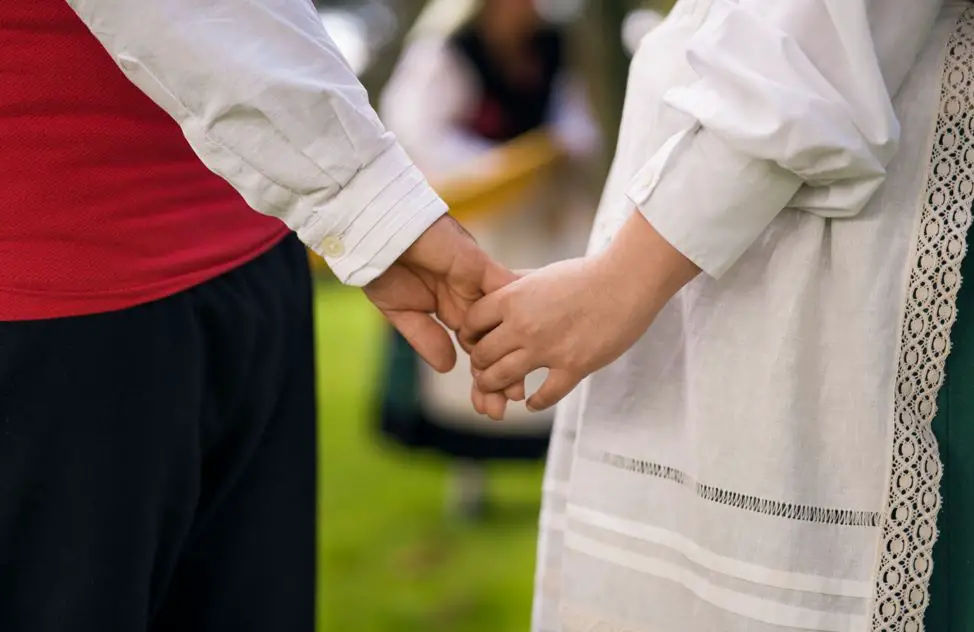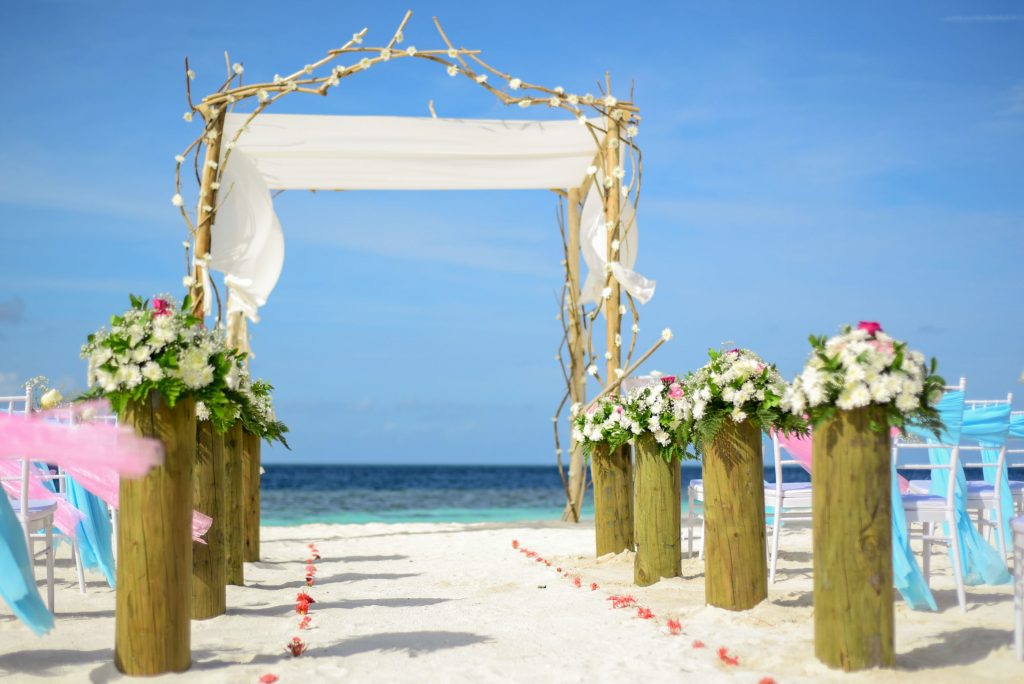Jewish weddings are rich with symbolism, traditions, and rituals that represent the deep spiritual meaning of marriage in the Jewish faith. These ceremonies often vary depending on cultural backgrounds, but they all carry the same essence of joy, love, and the joining of two individuals into one sacred union.
This guide will walk you through the key rituals and traditions common in Jewish weddings, providing insight into the customs that make these celebrations unique and meaningful.
Let’s get straight to the point
Jewish weddings are rich in tradition and symbolism, representing the spiritual significance of marriage. Key rituals include the signing of the Ketubah (marriage contract), the Chuppah (wedding canopy), the Sheva B'rachot (seven blessings), and the breaking of a glass to symbolise life's fragility and commitment.
The ceremony is filled with important moments such as the Kabbalat Panim (greeting of bride and groom), Bedeken (groom veiling the bride), and Yichud (private seclusion for the newlyweds). Post-wedding celebrations feature lively dancing, especially the Hora, and joyful customs like the parents' Mezinke dance.
Jewish weddings emphasise love, joy, family, and tradition, creating a meaningful union for the couple and their community.
What Are The Rituals In A Jewish Wedding?

A Jewish wedding is full of rituals, each with its symbolism and significance. The most common rituals include the signing of the Ketubah (marriage contract), the Chuppah (wedding canopy), the Sheva B'rachot (seven blessings), and the breaking of the glass at the end of the ceremony.
Jewish weddings celebrate the love and commitment between the bride and groom while invoking God's presence and blessings. Each ritual reinforces the significance of marriage within Jewish tradition while also reminding the couple of their responsibilities to each other and their community.
Traditional Dress Code
Jewish weddings, particularly Orthodox ones, often have specific dress codes. For women, modesty is key. Dresses that cover the shoulders and avoid revealing necklines are preferred. Black is a common and acceptable colour for both men and women, though some may question whether it’s appropriate. Men typically wear a simple suit and a Kippah or Yarmulke (skullcap) as a sign of respect. At Orthodox weddings, men and women might be seated separately, and dancing is usually gender-segregated.
Seating Arrangements
At many Orthodox Jewish weddings, the seating arrangement follows a traditional structure where men and women sit on opposite sides of the aisle. This practice stems from the belief that maintaining separation between genders during religious rituals enhances focus on the spiritual aspects of the ceremony. Some weddings also include a mechitza, a physical divider separating men and women during the ceremony and dancing. However, you may find mixed-gender seating and co-ed celebrations at more modern or Reform Jewish weddings.
Is It Required To Bring A Gift?
Jewish wedding etiquette encourages guests to give gifts, though bringing them to the wedding is not always mandatory. Many couples prefer receiving gifts before or after the wedding. Cash or checks are highly appreciated, as they provide the couple with flexibility. However, traditional gifts such as kitchenware, kiddush cups, and cookbooks are common. Be mindful, though, that some couples may not have a registry, especially if they plan to move to Israel after the wedding, as many Orthodox couples do.
Pre-Wedding Rituals
Kabbalat Panim
The wedding day begins with the Kabbalat Panim ceremony, which means "receiving faces." This is where the bride (kallah) and groom (chatan) are treated like royalty. The bride is seated on a throne-like chair, surrounded by her female friends and family, while the groom is celebrated by his male companions in an event called the Chosen’s Tish, or the groom’s table. During this time, the groom may attempt to share words of the Torah, but he is often interrupted by singing and joyous heckling, a tradition meant to keep the atmosphere festive.
Aufruf
Before the wedding, there is an aufruf, meaning "calling up" in Yiddish. The groom is called up to the Torah for an aliyah, a special honour, usually on the Shabbat before the wedding. After the reading, the congregation showers him with candies, symbolising sweetness and blessings for the upcoming marriage.
Breaking a Plate
A unique pre-wedding tradition in Jewish culture involves the mothers of the bride and groom breaking a plate together. This act symbolizes the seriousness and permanence of the marriage contract—just as a plate, once broken, cannot be fully restored, so too can the commitment made during the wedding not be undone easily.
Fasting on the Wedding Day
On the wedding day, many couples choose to fast, mirroring the solemnity of Yom Kippur, the Day of Atonement. This fast reflects the deep spiritual significance of the day, seen as a personal day of forgiveness and renewal. The fast typically ends when the couple shares their first meal after the wedding ceremony.
Key Wedding Ceremony Traditions

Ketubah Signing
The Ketubah, or marriage contract, is central to the Jewish wedding. It outlines the groom’s responsibilities to the bride and serves as a legal document ensuring their rights are protected. The groom signs the Ketubah and two witnesses before the ceremony begins, and is later read aloud during the wedding.
Bedeken
The beard is a touching pre-wedding ritual in which the groom veils the bride. This tradition is said to have originated from the story of Jacob and Leah in the Bible. This act symbolises the groom’s commitment to love his bride for her inner beauty, not just her external appearance.
The Chuppah
The Chuppah is the wedding canopy under which the bride and groom stand during the ceremony. It symbolises the home they will build together. The Chuppah is open on all sides, reflecting the Jewish value of hospitality and the importance of welcoming others into one’s home. The bride and groom are traditionally escorted to the Chuppah by their parents, adding an emotional family connection to the moment.
Circling the Groom
In many Ashkenazi weddings, the bride circles the groom three or seven times under the Chuppah. This custom creates a protective circle around the groom and symbolizes the establishment of a new family unit. Some also see it as a mystical act shielding the couple from evil or unwanted influences.
Vows and Kiddushin
Under the Chuppah, the couple exchanges rings in a ritual called Kiddushin (betrothal). The rings are simple and unadorned to symbolise the purity of the union. As the groom gives the ring to the bride, he says in Hebrew, "Behold, you are consecrated to me with this ring according to the law of Moses and Israel." This moment is the heart of the Jewish wedding ceremony and solidifies the couple’s union in the eyes of Jewish law.
Sheva B’rachot: The Seven Blessings
After the vows, the Sheva B'rachot (seven blessings) are recited over a cup of wine. These blessings praise God for the creation of the world, humanity, and the joys of marriage. The blessings also call for peace, harmony, and happiness in the couple’s life together. They are usually recited by close family members or friends, making this part of the ceremony spiritual and personal.
Breaking the Glass
The most well-known Jewish wedding ritual is breaking the glass at the end of the ceremony. Traditionally, the groom (and sometimes the bride) steps on a glass to shatter it. This act has many interpretations, from recalling the destruction of the Temple in Jerusalem to symbolising the fragility of human relationships. After the glass is broken, the guests shout, “Mazel Tov!”—wishing the couple good luck and congratulations.
Post-Wedding Rituals
Yichud
After the ceremony, the newlyweds retreat to a private room for Yichud, a time of seclusion. This quiet moment allows the couple to reflect on their new status as husband and wife. Sharing a meal is also their first opportunity to break their wedding day fast.
Seudat Mitzvah: The Wedding Feast
Jewish weddings are known for their lively receptions. The Seudat Mitzvah is the festive meal the bride, groom, and guests share. It’s a joyous time filled with music, dancing, and sometimes performances like juggling or acrobatics. One of the most famous dances is the Hora, where the couple is lifted into the air on chairs while their guests dance around them in a circle.
The Hora and Mezinke
The Hora is a circle dance that celebrates the couple’s happiness and is a staple at Jewish weddings. It’s common for men and women to dance separately, though at more liberal weddings, everyone might join in together. At the wedding of a family’s youngest child, the parents often participate in a special dance called the Mezinke, a way of celebrating the marriage of their last unmarried child.
Conclusion
Jewish weddings are deeply rooted in tradition and offer a beautiful tapestry of rituals that emphasise marriage's spiritual and communal aspects. From the initial blessings under the Chuppah to the breaking of the glass and the lively dances at the reception, each moment of a Jewish wedding is designed to reflect the joy, love, and holiness of the union between the bride and groom. These traditions passed down through generations, continue to enrich the lives of Jewish couples and their families as they embark on their journey together as husband and wife.
FAQs About Jewish Weddings
The Jewish marriage ceremony lasts more than a single day. The "wedding" ceremonies started with the choice to tie the knot. At the tenaim ceremony, a commitment contract is read and a dish is broken to symbolise the future marriage.
It is forbidden to have a wedding on Shabbat or any Jewish holiday, including Chol HaMoed. Since the point of a wedding is for the bride to gain her husband, it is forbidden to have weddings on Shabbat. No business may be transacted or property acquired during Shabbat, making weddings impossible. Work cannot be done on the wedding day since it is necessary for guests to arrive by transportation and the wedding's success. Even though practises throughout the omer counting period and the three weeks are generally forbidden, there is some variation in these restrictions based on local custom. There are more and less fortunate months and days.
Jewish prenuptial agreements were devised recently by Jewish religious entities to protect wives from their husbands' possible refusal to issue a payout in the case of a divorce. Many countries, including the UK, US, and Israel, have developed and broadly adopted similar documents. However, not everyone agrees with this method; the Orthodox in particular have been sceptical.
The Lieberman clause was created by conservative Jews to ensure that no husband could ever refuse to grant his wife a get. The ketubah is designed to do this with built-in provisions; hence, should certain events occur, the divorce will be finalised instantly.
Judaism considers marriage to be the formalisation of a ritual purification between a Jewish man and a Jewish woman in which they involve God. There are two ways a Jewish marriage might come to an end: either one of the spouses dies or the husband gives his wife a divorce certificate. In Talmudic times, some provisions were added, especially to safeguard the woman.
Changes in who can marry who are the result of non-Orthodox trends. However, there is some disagreement about whether or not it is desirable to avoid intercultural marriage.
According to the Talmud, a man must keep his wife's physical being safe. In the event of his wife's illness, he would be obligated by the Talmud to cover any and all medical costs that may arise; he must see that his wife receives treatment. Even though his wife had been unwell for a long time, some renowned rabbis throughout history opposed divorce as inhumane behaviour, so he couldn't use it to get out of paying for her medical bills.

